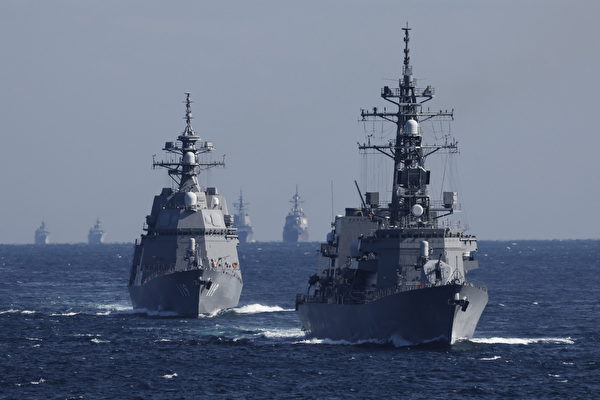Last July, the Japanese Maritime Self-Defense Force destroyer “Ryuge” mistakenly entered the waters of Zhejiang Province, China, and was fired upon by at least two warning shots by the Chinese side. The latest news indicates that the fundamental reason for the incident was that the electronic navigation map on the “Ryuge” did not display the boundary of the Chinese territorial waters, leading the vessel to mistakenly enter Chinese waters without timely detection.
The incident occurred on the morning of July 4 last year when the “Ryuge” was conducting a surveillance mission on military exercises by the Chinese Communist Party in international waters and sailing in the waters off Zhejiang Province. Chinese authorities noticed the vessel approaching the Chinese territorial waters and repeatedly requested a change in course.
According to information from various sources on Japan-China relations quoted by Kyodo News, the fundamental reason for the incident lies in the setting of the electronic navigation map on the “Ryuge,” which failed to show the boundary of Chinese territorial waters, causing the crew to be unaware that they had entered Chinese waters. Despite receiving warnings, the vessel continued sailing within Chinese territorial waters for about 20 minutes.
Sources revealed that when the “Ryuge” approached the territorial boundary, the Chinese side fired warning shots for the first time. Subsequently, after the vessel entered Chinese waters, the Chinese side fired shots again, demanding an immediate departure.
Due to errors in electronic navigation map settings and operations, the Japan Maritime Self-Defense Force determined that this incident violated significant navigation regulations, leading to the replacement of the ship’s captain.
While it is rare for the Chinese Navy to fire warning shots at foreign warships, this incident highlighted the high tension at that time, potentially leading to a dangerous escalation.
Since 2018, both China and Japan have promoted the “Maritime and Air Liaison Mechanism” and established a defense hotline in March 2023 to facilitate rapid communication in case of emergencies, reducing collision and misjudgment risks.
However, it has not been disclosed by both governments whether the defense hotline was activated during this incident.

